Working with your child's school
Explore the topics below for tips on supporting your child at school.
These webpages and online materials have been developed to support families of children who experience difficulties with attention, regulation, and concentration. This includes children diagnosed with attention deficit hyperactivity disorder (ADHD).
Summary
- Children with attention, regulation and concentration difficulties may have challenges at school.
- If you have concerns about how your child is going at school, talk to their teacher.
- Try to work closely with their school to ensure your child is well supported.
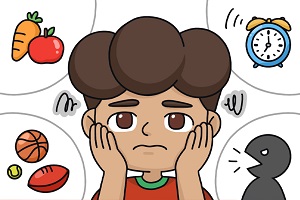
When your child is having difficulty at school, it is important to work closely with their teacher and other school staff to ensure your child receives the support they need to help with their learning.
Here are some ways to build a positive and productive relationship with teachers and other school staff and make it easier to advocate for your child. Advocate means to speak-up, support or take action to help.
Communicating with school
- Get to know your child’s teacher early in the school year.
- Ask about the best way to contact their teacher and when they are available to talk.
- Touch base with your child’s teacher regularly.
- Use email or a communication book to share updates, concerns and progress.
- Prepare for meetings by writing down concerns, successes and any strategies that have worked at home.
- Approach discussions with a problem-solving mindset and be open to suggestions from the school.
Talk about your child’s strengths
- Every child has strengths and it’s important to share these with your child’s teacher.
- Knowing what your child is good at and enjoys doing helps your child’s teacher to use strengths-based learning strategies. This means starting with what your child is good at and then teaching new skills.
- When teachers see and react positively to your child’s strengths, it helps build their confidence and motivation.
Share what works (and what doesn’t)
- Use what you know about your child, and their teacher’s ideas about what your child needs, to make a plan for your child.
- Be clear about what doesn’t work for your child. For example, too many instructions at once, or sitting still for a long time.
- Work together to find practical solutions that could work in the classroom.
Work with the school to develop an Individual Education or Learning Plan
- An Individual Education Plan is a personalised plan that outlines support, adjustments, and goals to help your child succeed. Some schools may call this plan a different name.
- Ask the teacher to arrange a meeting with all relevant people involved in supporting your child's educational needs.
- Be clear about what your goals are for your child’s academic achievement.
- Be involved by helping your child work towards their goals at home.
Know the school’s approach to managing behaviour
- Your school will have a Behaviour Management Plan which explains how the school manages behaviour for all students. It usually includes rewards and consequences.
- It may be helpful to ask the teacher or deputy principal how they support children with attention, regulation or concentration challenges.
- Work with your child’s teacher to develop consistent strategies for school and home that will help your child participate at school.
Work with the school to develop an Individual Behaviour Management Plan (IBMP)
- An IBMP is designed specifically for your child, to address any behaviours that may be affecting them at school. The plan focuses on supporting positive behaviour to help your child participate at school.
- It sets clear expectations for both you and your child about how the school will support them to participate fully at school. It is important that you, your child and teacher all contribute to the plan.
- Ask for a meeting with the school to discuss what your child needs to support their behaviour.
- Be clear about what your goals are for your child’s behaviour at school. Discuss these with your child’s teacher.
Understand restorative practice
- Many schools use restorative practice to help children learn from mistakes, rather than just punishing them for negative behaviour.
- Restorative practice is a way to respond to challenging behaviour. It acknowledges that many factors affect the way a child behaves.
- The focus of restorative practice is on working together with you and your child to solve problems, repair harm, and build positive relationships.
- Talk to your child’s teacher about how restorative practice is used at school.
- Encourage your child to talk about their feelings and learn from both positive and negative experiences. Help them to work out different ways to manage their behaviour. For example, 'Let’s talk about what happened when you ran out of the classroom today. How were you feeling? What could you do next time so that Mrs Davies doesn't get worried about you leaving?'
Ask for support
- You don’t have to do this alone. Connecting with other parents of children with ADHD or advocacy groups can provide you with valuable support and advice.
- Ask the school for any resources they have that can support your child’s learning.
- Talk to health professionals who specialise in ADHD.
Explore these links for other ideas about how to work with your child’s teacher and advocate for your child at school.
Being an advocate for children | Raising Children Network
Working with teachers and schools | Raising Children Network
Individual learning plans: kids and teens | Raising Children Network
Building a positive relationship with your child's school | vic.gov.au
Summary
- Being able to focus in the classroom is a skill that children develop with practise.
- There are things that you can do at home that will help your child focus better at school.
- Work with your child’s teacher to find strategies to help your child’s attention, regulation and concentration in the classroom.
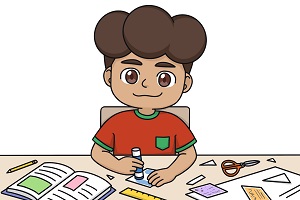
Some children find it harder than others to pay attention, regulate their emotions and behaviour and concentrate. There are things that you can do at home which will help them in the classroom.
Getting enough sleep
Children need 9 to 11 hours of sleep every night. You can help by:
- reducing screen time before bed
- having a consistent bedtime routine
- using calming activities like reading or guided meditation before bed.
Nutrition and hydration
A balanced breakfast and packing healthy snacks for school will help your child’s concentration in class.
Encourage your child to drink water throughout the day. Even mild dehydration can make them tired and affect their concentration.
Organisation
Teach your child ways that can help with organisation. This might include:
- using alarms and timers to help them keep track of time
- keeping their belongings organised, for example putting their school bag in the same place each day
- keeping track of homework and projects by using a diary
- helping your child break larger tasks into smaller steps.
Physical activity before school
Walking or riding to school or having a quick play on the playground can help your child get ready for learning.
For other ideas on what you can do at home to help with concentration in the classroom, please watch video below:
At school
Create the best learning environment:
- Minimising distractions helps children to focus on instructions and complete tasks. For example, sitting closer to the front of the classroom and away from distractions, such as the windows or doors.
- Visual schedules and checklists can help children follow instructions and be more independent.
Adapt learning activities:
- Using a child’s strengths and interests, and the way they learn best (such as hands-on learning) can help them concentrate for longer.
- All children feel more alert and concentrate better when they have breaks to move around during formal learning activities.
- Breathing activities can help children become calmer when they’re feeling overwhelmed.
The resources at the links below may help your child. Share any that you find useful with your child’s teacher.
Primary school teacher strategies for ADHD | AllPlay Learn
Secondary school teacher strategies for ADHD | AllPlay Learn
ADHD: supporting children and pre-teens | Raising Children Network
ADHD: ways to help children at school and home | Kids Health Info
Evidence-based strategies for the classroom: attention | NSW Education
Individual learning plans: kids and teens | Raising Children Network
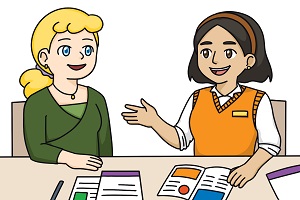
Get to know your child’s teacher early in the school year
- Arrange a time to meet with your child’s teacher to discuss your child and things that may help them participate at school.
- The teacher may include other staff members who are involved with your child at school.
Tell them about your child’s strengths, interests and areas they find difficult
- You may find it helpful to write these things down for the teacher. Think about your child’s personality, their interests and hobbies, the way they interact with others, the way they learn new things.
- This information might be useful to your teacher to use in the classroom.
You may like to watch our video Recognising your child's strengths and interests
Use a communication book
- A communication book is a notebook that both you and the teacher can write in. This could be used as an easy way to communicate about what is happening at home and at school.
Share ideas and information
- Talk to your child’s teacher about the things you have found that help your child to learn. Tell them the things that don’t seem to work as well.
- Be open to new ideas and share information and strategies that are working for your child.
- This could be reports from health professionals, visual reminders (like visual schedules or checklists) for their desk, or online information that you have found helpful.
Touch base with your child’s teacher
- If you are worried or want to talk about your child at any time in the school year, contact their teacher to arrange a time to meet.
- This gives both you and the teacher time to prepare what you want to talk about. Setting up a time outside of core school hours allows both you and the teacher time to talk without interruption.
Explore these links for other ideas about working with your child’s teacher.
Working with teachers and schools | Raising Children Network
Off to school | Developmental Disability WA
Advocating for your child at school | Developmental Disability WA
Children with attention deficit hyperactivity disorder (ADHD) may sometimes find it difficult to focus and learn at school. They may also have trouble:
- making friends
- interacting with classmates
- planning tasks
- remembering to take things between home and school
- managing their time.
Any of these difficulties can affect their self-esteem and confidence.
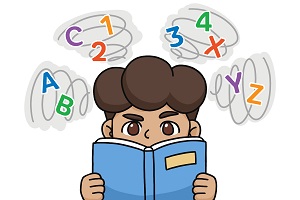
There are many ways that a task can be adjusted to help a child achieve success.
Explore the links below to find out more.
What is ADHD?
ADHD: children and teens | Raising Children Network
Supporting children with ADHD
ADHD: supporting children and pre-teens | Raising Children Network
Individual learning plans: kids and teens | Raising Children Network
Strategies for home and school
Kids Health Info | ADHD – ways to help children at school and home (rch.org.au)
Fine and gross motor skills | nsw.gov.au
Inclusive Practice hub | nsw.gov.au
Classroom resources
Primary School Teacher Strategies for ADHD | AllPlay Learn
Secondary School Teacher Strategies for ADHD | AllPlay Learn
Podcasts
Summary
- The start of a new school year can bring excitement, nerves, and a few challenges for children.
- There are many ways that you can help your child prepare for school and settle in smoothly.
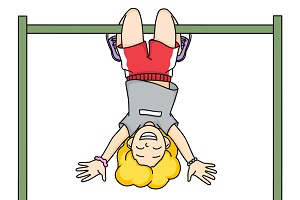
Have a routine
- Start getting your child’s sleep into a regular pattern in the week before school starts.
- Have a clear routine to help your child get ready for school in the morning. A checklist might help them be more independent.
- Talk about drop-offs, pick-ups, and after-school plans so your child knows what to expect.
Talk about feelings
- Help your child recognise their emotions. They might feel excited, nervous, or unsure. Let them know it’s okay to feel that way.
- Reassure and encourage your child. Remind them of their strengths and the fun parts of school (friends, activities, learning new things).
- If your child has worries, talk through possible solutions with them.
Get organised
- Check your child’s school supplies. Make sure they have everything they need, including uniforms, a lunchbox and stationery.
- Be prepared for school. It might help to lay out clothes, pack lunches, and have school bags ready the night before.
- Create a family calendar. This can help you remember important dates like school events, homework deadlines and non-school activities.
- Set up a homework space. A quiet, organised area will help your child focus.
Build connections
- Meet the teacher. If possible, introduce yourself and help your child feel comfortable with their new teacher.
- Reconnect with friends. Arrange playdates or chats with school friends before the first day of school.
- Talk about school in a positive way.
Support healthy habits
- Help your child get enough sleep. Your child will find it easier to concentrate and manage emotions if they have slept well.
- Provide nutritious meals, snacks and plenty of water to support energy levels and focus at school.
- Balance screen time with other activities. Ease back into school-friendly habits by setting clear limits on devices before and after school, and in the hour before bed.
Stay calm and flexible
- It may take a few weeks for your child to fully adjust to the new school routine, so be patient.
- Check in with your child regularly by asking open-ended questions like 'What was the best part of your day?' and 'What didn’t go so well today?' Asking about both their highlights and challenges helps them to talk about the good and the bad experiences.
- Ask for help if needed. If your child is struggling, contact their teacher or other school staff for advice.
Explore the following links for more ideas on how to make the start of a new school year as successful as possible.
Back to school | Department of Education
Primary school: preparing children | Raising Children Network

